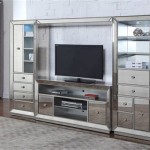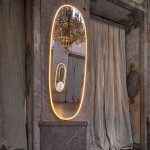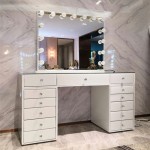How To Hang a Wall Mirror on Drywall
Hanging a mirror on drywall might seem straightforward, but proper techniques ensure the mirror's safety and prevent damage to the wall. This article provides a comprehensive guide for securely and efficiently mounting a mirror of any size.
1. Assessing the Mirror and Wall
Before beginning, evaluate the mirror's weight and dimensions. Heavier mirrors require more robust hanging hardware and potentially different installation methods. Measure the mirror's width and height to determine the optimal placement on the wall.
Next, assess the drywall itself. Locate and mark wall studs using a stud finder. Studs provide the most secure anchoring points, particularly for heavier mirrors. If studs are not located where the mirror needs to be hung, appropriate wall anchors will be necessary. Consider also the wall's condition. Repair any damaged areas before hanging the mirror to ensure a secure and stable installation.
2. Choosing the Right Hanging Hardware
The choice of hanging hardware depends primarily on the mirror's weight and the availability of studs. For lighter mirrors and when mounting directly to studs, D-rings and screws are a reliable option. Ensure the screws are long enough to penetrate the studs sufficiently.
For heavier mirrors or when mounting on drywall without stud support, heavy-duty wall anchors are essential. Several types are available, including toggle bolts, molly bolts, and self-drilling anchors. Toggle bolts offer high weight capacity, while molly bolts are suitable for hollow walls. Self-drilling anchors are convenient for quick installation. Select anchors rated to support a weight exceeding the mirror's weight.
Some mirrors come with pre-installed wire or cleats. For these mirrors, the corresponding hardware needs to be installed on the wall. For wire-backed mirrors, D-rings or J-hooks on the wall will suffice. Cleat systems, consisting of two interlocking brackets, offer exceptional stability for heavy mirrors and large frames. Ensure the cleat system is rated to support the mirror's weight.
3. Marking and Installation
Accurate measurements are crucial for proper mirror placement. Once the desired location is determined, use a pencil and level to mark the hanging points on the wall. If using D-rings and screws or wall anchors, mark the location for each anchor or screw. For wire-backed mirrors, measure the distance between the D-rings or hooks on the back of the mirror. Transfer these measurements to the wall, ensuring the marks are level. For cleat systems, mark the placement of the wall-mounted portion of the cleat according to the manufacturer's instructions.
If using screws and hitting a stud, predrill pilot holes to prevent the wood from splitting. Then, secure the D-rings or other hardware to the wall. If using wall anchors, follow the manufacturer's instructions for installation. Ensure all hardware is flush with the wall. For mirrors with pre-installed wire, hang the wire onto the installed D-rings or J-hooks.
For cleat systems, carefully align the mirror's cleat with the wall-mounted cleat and gently lower the mirror into place. The interlocking mechanism will secure the mirror to the wall. Double-check the stability of the mirror after installation by gently applying pressure to different points.
After hanging the mirror, clean the mirror's surface with a suitable glass cleaner to remove any fingerprints or smudges. Step back and appreciate the newly hung mirror, ensuring it is level and securely fastened.
4. Safety Considerations
Wear appropriate safety glasses when drilling and handling hanging hardware to protect your eyes from dust and debris. Always use the right tools for the job to minimize the risk of injury or damage. If working with heavier mirrors, enlist the help of another person to lift and position the mirror safely.
When choosing hanging locations, consider potential hazards like doorways and high-traffic areas. Avoid placing very large or heavy mirrors above furniture where they could pose a risk if they were to fall. Regularly inspect the hanging hardware and the wall around the mirror for any signs of loosening or damage. Tighten any loose screws or replace worn anchors promptly.
If uncertain about any part of the process, particularly when dealing with heavier mirrors or complex wall materials, consult a professional handyman or contractor. They can provide expert advice and ensure the mirror is installed safely and securely.
How To Hang A 100 Pound Mirror On Drywall Quora

How To Hang A Heavy Mirror On Drywall Stas Picture Hanging Systems

How To Hang A Large Or Heavy Mirror

How To Hang A Heavy Mirror Diy Family Handyman

How To Hang A Heavy Mirror With French Cleat

A Better Way To Hang Heavy Mirror Hanging Pictures

Mounting A Mirror On Drywall Top 8 Ways For Savvy Handyman

How To Hang Heavy Mirrors Frames Without Nails 3m

How To Hang A Very Heavy Picture Or Mirror The Best

How To Hang A Heavy Mirror








